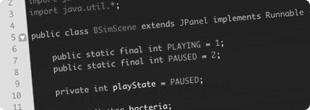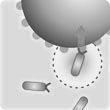Team:BCCS-Bristol/Modeling-Batch Simulations
From 2008.igem.org
(Difference between revisions)
Tgorochowski (Talk | contribs) (→Statistical Analysis) |
Tgorochowski (Talk | contribs) |
||
| Line 1: | Line 1: | ||
| + | <html><link rel="stylesheet" href="http://www.chofski.co.uk/iGEM/bccs-igem.css" type="text/css"></html> | ||
| + | __NOTOC__ | ||
| + | <div class="bccsNavBar"> | ||
| + | {| align="center" | ||
| + | !align="center"|[[Team:BCCS-Bristol|Home]] | ||
| + | !align="center"|[[Team:BCCS-Bristol/Team|The Team]] | ||
| + | !align="center"|[[Team:BCCS-Bristol/Project|The Project]] | ||
| + | !align="center"|[[Team:BCCS-Bristol/Parts|Submitted Parts]] | ||
| + | !align="center"|[[Team:BCCS-Bristol/Modeling|Modelling]] | ||
| + | !align="center"|[[Team:BCCS-Bristol/Notebook|Wet Lab]] | ||
| + | !align="center"|[[Team:BCCS-Bristol/Calendar|Calendar]] | ||
| + | !align="center"|[[Team:BCCS-Bristol/Misc|Miscellaneous]] | ||
| + | |} | ||
| + | <br> | ||
| + | </div> | ||
| + | |||
| + | {| align="center" | ||
| + | |[[Image:BCCS-Modelling-Header_01.jpg]] [[Image:BCCS-Modelling-Header_02.jpg]] [[Image:BCCS-Modelling-Header_03.jpg]] | ||
| + | |} | ||
| + | |||
| + | <div class="bccsMain"> | ||
| + | |||
== Batch Simulations == | == Batch Simulations == | ||
| Line 21: | Line 43: | ||
* Scatter plots. | * Scatter plots. | ||
* Means. | * Means. | ||
| + | |||
| + | <br> | ||
| + | </div> | ||
Revision as of 08:59, 25 August 2008
  
|
Batch Simulations
Batch simulations allow us to perform statistical analysis on our simulations and in particular look at the affect of altering one or many of the parameters. This will enable us to inform the wet lab team of the optimum conditions for their experiments.
Statistical Analysis
For every simulation statistical analysis will be performed on six aspects:
- The direction (angle) the particle has moved towards the chemoattractant.
- The distance (x axis) travelled by the particle.
- The mean direction (angle) of movement by all particles towards the chemoattractant.
- The mean distance (x axis) travelled by all particles.
- The mean direction (angle) of bacterial movement towards the chemoattractant
- The mean distance (x axis) bacteria travelled.
For each altered parameter 100 simulations (if feasible) will be run with each simulation running for 10 000 time steps containing 1-10 particles.
Methods of Statistical Analysis
Methods of Statistical analysis will include:
- T tests to show that results observed due to parameter changes are statistically significant.
- Histograms.
- Scatter plots.
- Means.
 "
"